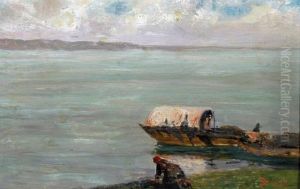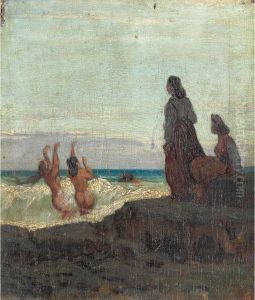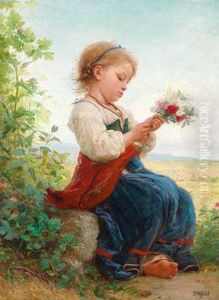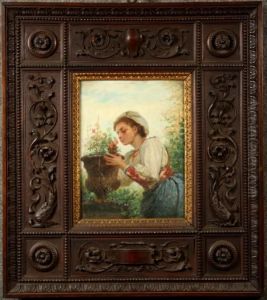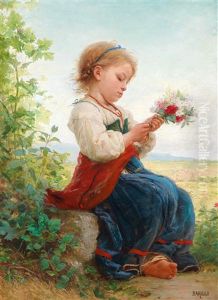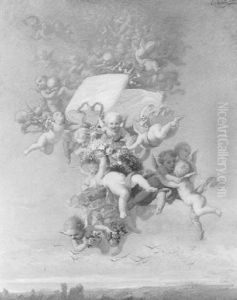Cecrope Barilli Paintings
Cecrope Barilli was an Italian painter and art critic, born in Parma, Italy, in 1839. He was a prominent figure in the Italian art scene of the 19th century, known for his contributions to the Romantic and Symbolist movements. Barilli's work was deeply influenced by the rich cultural and artistic heritage of Italy, particularly the Renaissance period, which is evident in his meticulous attention to detail and his use of vibrant colors.
In the early stages of his career, Barilli was influenced by the works of the Macchiaioli, a group of Italian artists who were pioneers in the technique of plein air painting, focusing on landscapes and everyday life. However, as his style evolved, Barilli began to incorporate more symbolic and mythological themes into his work, reflecting the shift towards Symbolism that was happening across Europe at the time. His paintings often depicted classical and mythological subjects, imbued with a sense of melancholy and introspection, characteristic of the Symbolist movement.
Apart from his work as a painter, Cecrope Barilli was also an influential art critic and teacher. He was deeply involved in the artistic community of Parma and played a significant role in promoting the arts in the region. Barilli was known for his critical writings, in which he advocated for the importance of tradition and craftsmanship in art, while also encouraging innovation and the exploration of new ideas.
Throughout his career, Barilli participated in numerous exhibitions, both in Italy and abroad, earning widespread acclaim for his artistic talents. His legacy is preserved in the collections of several Italian museums, where his works continue to be admired for their beauty and emotional depth. Cecrope Barilli passed away in 1911, leaving behind a body of work that remains influential in the study of 19th-century Italian art.
